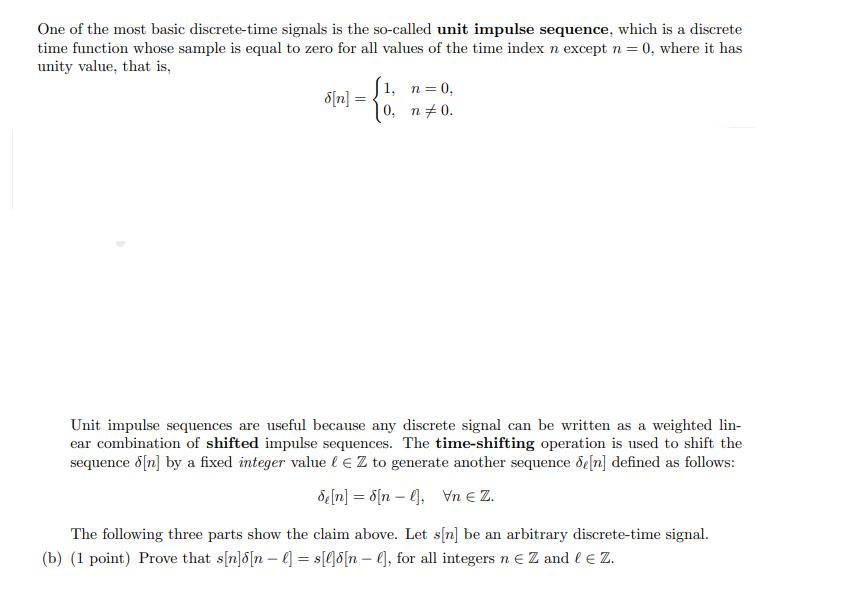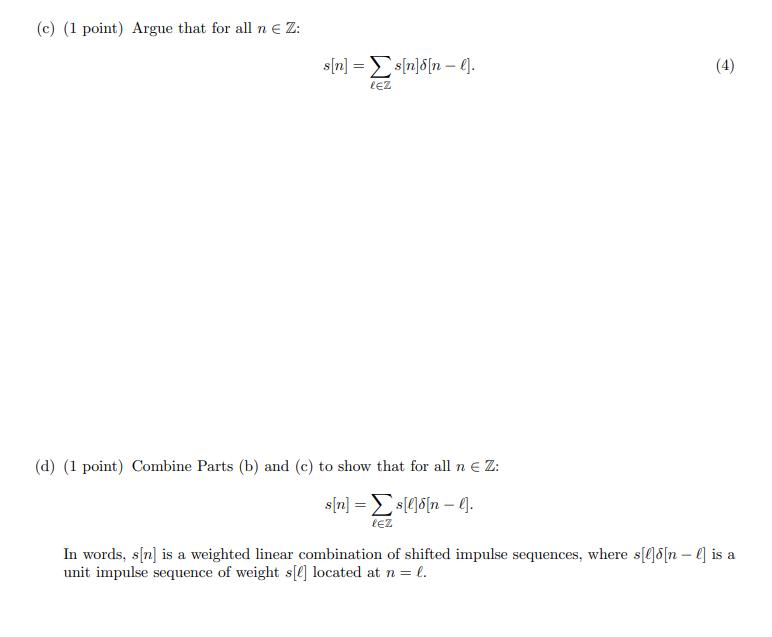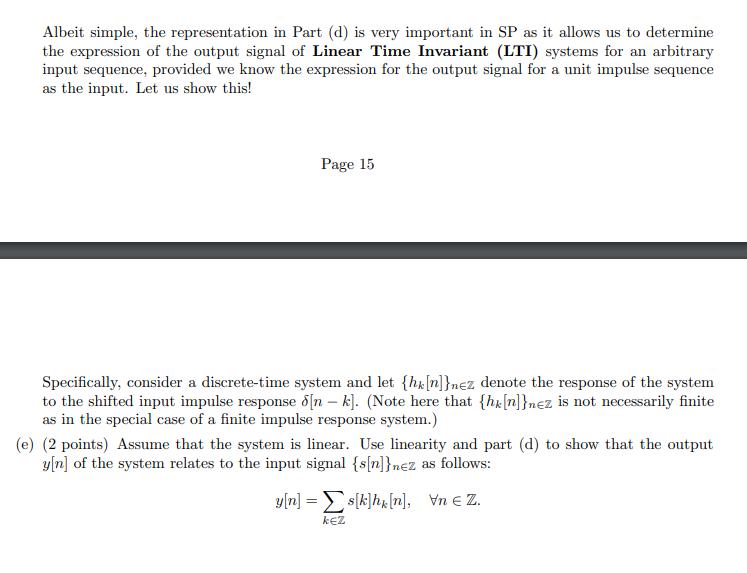Answered step by step
Verified Expert Solution
Question
1 Approved Answer
One of the most basic discrete-time signals is the so-called unit impulse sequence, which is a discrete time function whose sample is equal to



One of the most basic discrete-time signals is the so-called unit impulse sequence, which is a discrete time function whose sample is equal to zero for all values of the time index n except n = 0, where it has unity value, that is, 6[n] = = 1, n = 0, 0, n = 0. Unit impulse sequences are useful because any discrete signal can be written as a weighted lin- ear combination of shifted impulse sequences. The time-shifting operation is used to shift the sequence o[n] by a fixed integer value l Z to generate another sequence de[n] defined as follows: de[n]d[nl], Vn Z. = The following three parts show the claim above. Let s[n] be an arbitrary discrete-time signal. (b) (1 point) Prove that s[n]d[n] = s[l][nl], for all integers n Z and l Z. (c) (1 point) Argue that for all n Z: s[n]s[n]d[nl]. LEZ (d) (1 point) Combine Parts (b) and (c) to show that for all n Z: s[n] = s[l]d[nl]. LEZ (4) In words, s[n] is a weighted linear combination of shifted impulse sequences, where s[][n] is a unit impulse sequence of weight s[] located at n = l. Albeit simple, the representation in Part (d) is very important in SP as it allows us to determine the expression of the output signal of Linear Time Invariant (LTI) systems for an arbitrary input sequence, provided we know the expression for the output signal for a unit impulse sequence as the input. Let us show this! Page 15 Specifically, consider a discrete-time system and let {hk[n]}nez denote the response of the system to the shifted input impulse response d[nk]. (Note here that {he[n]}nez is not necessarily finite as in the special case of a finite impulse response system.) (e) (2 points) Assume that the system is linear. Use linearity and part (d) to show that the output y[n] of the system relates to the input signal {s[n]}nez as follows: y[n] = s[k]h[n], Vn Z. KEZ
Step by Step Solution
There are 3 Steps involved in it
Step: 1

Get Instant Access to Expert-Tailored Solutions
See step-by-step solutions with expert insights and AI powered tools for academic success
Step: 2

Step: 3

Ace Your Homework with AI
Get the answers you need in no time with our AI-driven, step-by-step assistance
Get Started


